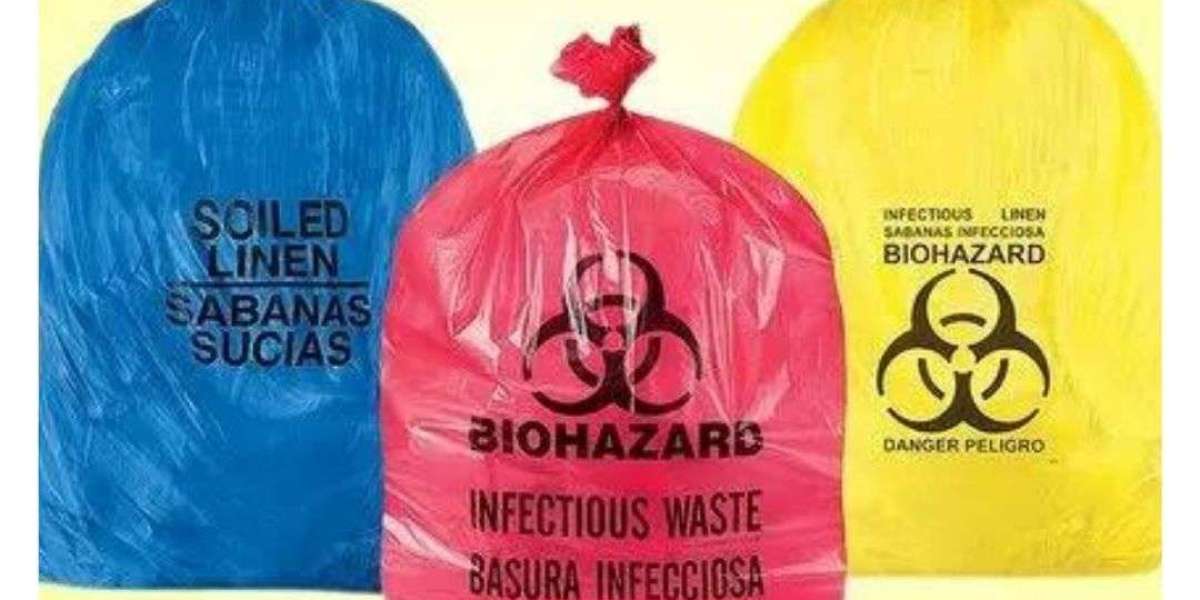Biohazard bags play a crucial role in the management of hazardous waste, particularly in healthcare and laboratory settings. These specialized bags are designed to safely contain and dispose of materials that may pose a risk to human health or the environment. With the increasing generation of biomedical waste, the demand for effective disposal solutions has surged, leading to a diverse range of Biohazard plastic bag tailored for specific needs.
Types of Biohazard Bags
Biohazard bags come in various types, each serving distinct purposes based on the nature of the waste they are intended to contain. Understanding these types is essential for proper waste management.
Clear Biohazard Bags: These bags are typically used for non-contaminated or low-risk biohazardous waste. They offer visibility of contents and are made from lightweight polyethylene material, making them suitable for general waste segregation.
Red Biohazard Bags: Commonly utilized in medical settings, red bags are designed to collect anatomical waste, including blood-soaked items and other infectious materials. Their robust construction ensures that potentially hazardous materials are securely contained without risk of leakage.
Yellow Biohazard Bags: These bags are specifically meant for infectious clinical waste, such as swabs, dressings, and other materials contaminated with bodily fluids or chemicals. Yellow bags are often marked with "Clinical Waste" to clearly indicate their purpose.
Orange Biohazard Bags: Used for clinical waste that has not been contaminated by chemicals, orange bags provide a safe option for disposing of non-hazardous and hazardous waste that may come into contact with infectious individuals.
Importance of Biohazard Bags in Medical Waste Management
The use of bio-medical waste bags is critical in preventing the spread of infections and protecting public health. Medical facilities generate various types of waste, including sharps (needles and blades), pathological waste (human tissues), and pharmaceutical waste (expired medications). Proper segregation and disposal using biohazard bags minimize the risk of exposure to harmful pathogens.
Key Benefits of Using Biohazard Bags
- Safety: Biohazard bags are designed to contain potentially infectious materials securely, reducing the risk of exposure for healthcare workers and patients.
- Regulatory Compliance: Many regions have strict regulations regarding the disposal of biomedical waste. Utilizing appropriate biohazard bags helps facilities comply with these regulations.
- Environmental Protection: Proper disposal methods prevent hazardous materials from contaminating the environment, protecting both wildlife and human populations.
Selecting the Right Bio-Medical Waste Bags
When choosing bio-medical waste bags, it is essential to consider several factors to ensure effective waste management:
- Material Strength: The bag's material should be puncture-resistant and durable enough to contain sharp objects and liquids without tearing.
- Color Coding: Different colors signify different types of waste; understanding this coding system aids in proper segregation.
- Size Options: Various sizes accommodate different volumes of waste, from small sharps containers to larger anatomical waste collections.
Biohazard Bags Manufacturers: Ensuring Quality and Compliance
With the increasing demand for Bio medical waste bags manufacturers, numerous manufacturers have emerged in the market. These manufacturers play a vital role in ensuring that healthcare facilities have access to high-quality products that meet regulatory standards. When selecting a supplier, consider:
- Reputation: Established manufacturers often have a track record of quality and compliance with industry standards.
- Product Range: A wide variety of bag types indicates a manufacturer’s ability to cater to diverse needs.
- Certifications: Look for manufacturers who comply with relevant health and safety regulations.
Best Practices for Handling Biohazard Bags
Handling biohazard bags requires adherence to specific safety protocols to minimize risks:
- Personal Protective Equipment (PPE): Always wear gloves, masks, and protective clothing when handling biohazardous materials.
- Proper Sealing: Ensure that all biohazard bags are securely sealed before disposal to prevent leaks.
- Training: Staff should be trained on proper procedures for handling and disposing of biomedical waste.
Conclusion
Biohazard bags are indispensable tools in managing biomedical waste effectively. By understanding their types, benefits, and best practices for use, healthcare facilities can significantly reduce risks associated with hazardous materials. As manufacturers continue to innovate in this space, the importance of selecting high-quality Bio-medical waste bags cannot be overstated. Proper handling and disposal not only protect healthcare workers but also safeguard public health and the environment from potential hazards associated with biomedical waste.
FAQs About Biohazard Bags
What materials are biohazard bags made from?
Biohazard bags are typically made from durable plastics such as polyethylene or polypropylene. These materials provide puncture resistance and strength necessary for containing hazardous materials.
How should I dispose of biohazard bags?
Biohazard bags should be disposed of according to local regulations regarding biomedical waste disposal. Typically, they must be collected by licensed medical waste disposal services that handle hazardous materials safely.
Are there specific regulations governing the use of biohazard bags?
Yes, many countries have regulations that dictate how biomedical waste must be managed, including the use of biohazard bags. These regulations often specify bag colors, labeling requirements, and disposal methods to ensure public safety and environmental protection.



